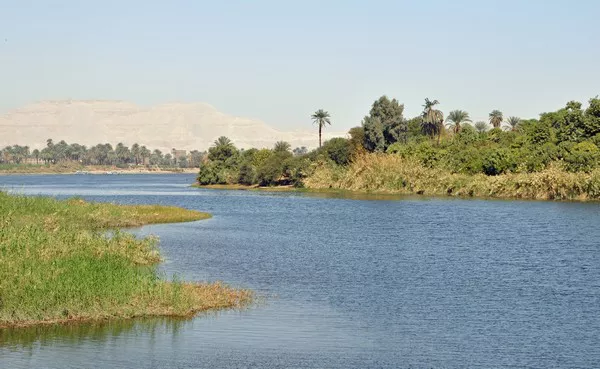Rivers are the lifeblood of our planet, shaping landscapes, sustaining ecosystems, and nurturing civilizations throughout history. Among the myriad of rivers that crisscross the Earth, some stand out for their extraordinary length, weaving tales of diverse cultures and ecosystems along their banks. In this article, we embark on a journey to explore the ten longest rivers in the world, unraveling the significance and impact each waterway has on the regions they traverse.
10 Longest Rivers in the World
1. The Nile: The Lifeline of Ancient Civilization
Stretching across northeastern Africa, the Nile is not only the longest river on the continent but also one of the most historically significant. Flowing through eleven countries, the Nile has been the cradle of ancient civilizations, including the Egyptian empire. With a length of approximately 6,650 kilometers, the Nile’s annual flooding once played a crucial role in sustaining agriculture and ensuring the prosperity of the civilizations along its banks.
2. The Amazon: The Mighty Heart of South America
In the heart of South America, the Amazon River reigns supreme as the largest and second-longest river globally. Stretching over 7,000 kilometers, the Amazon winds through the lush rainforests of Brazil, Peru, Colombia, and several other countries. Known for its unparalleled biodiversity, the Amazon River basin houses a vast array of plant and animal species, making it an ecological treasure trove.
3. The Yangtze: Navigating the Heart of China
China’s Yangtze River stands as the longest river in Asia, coursing through the heart of the country for approximately 6,300 kilometers. This iconic waterway has played a pivotal role in Chinese history and culture, serving as a transportation artery, agricultural resource, and witness to centuries of civilization. The Three Gorges Dam, one of the world’s largest hydroelectric power stations, harnesses the Yangtze’s power to generate electricity for millions.
4. The Mississippi-Missouri: A Confluence of Power in North America
Combining the Mississippi and Missouri Rivers, this river system holds the title for the longest in North America, with a length exceeding 6,275 kilometers. Originating in the Rocky Mountains, the Missouri River converges with the Mississippi in the heartland of the United States, creating a network that has played a crucial role in shaping the economic and cultural development of the region.
5. The Yenisei-Angara-Lena: Siberia’s Majestic Flow
In the vast expanses of Siberia, the Yenisei, Angara, and Lena Rivers form a contiguous network of waterways, ranking as the fifth-longest river system globally. With a combined length of over 5,539 kilometers, these rivers traverse the remote landscapes of Russia, influencing the climate, ecology, and human settlements in this frigid region.
6. The Yellow River: The Cradle of Chinese Civilization
Known as the “Mother River of China,” the Yellow River, or Huang He, stretches for approximately 5,464 kilometers, making it the sixth-longest river in the world. This iconic waterway has played a crucial role in shaping Chinese civilization, supporting agriculture and serving as a witness to the rise and fall of dynasties throughout history.
7. The Ob-Irtysh: Siberia’s Northern Lifeline
Siberia boasts yet another extensive river system, the Ob-Irtysh, ranking as the seventh-longest in the world. With a length exceeding 5,400 kilometers, these rivers traverse the vast northern expanses of Russia, influencing the climate and providing vital water resources for the region’s ecosystems and communities.
8. The Paraná-Paraguay: South America’s Vital Arteries
Flowing through Brazil, Paraguay, and Argentina, the Paraná and Paraguay Rivers combine to form the eighth-longest river system globally, spanning over 4,880 kilometers. These rivers play a crucial role in South America’s transportation network, fostering trade and connecting landlocked regions to global markets.
9. The Congo: Africa’s River of Darkness
The Congo River, often referred to as the “River of Darkness,” is the second-longest river in Africa, with a length of approximately 4,700 kilometers. Flowing through the heart of the continent, the Congo is surrounded by dense rainforests and is home to an incredibly diverse array of plant and animal species, making it a vital component of Central Africa’s ecological balance.
10. The Amur-Argun: Russia’s Eastern Flow
Spanning over 4,444 kilometers, the Amur-Argun River system ranks as the tenth-longest in the world. Flowing through Russia’s Far East and forming a natural border with China, this waterway plays a crucial role in supporting ecosystems and providing water resources for the region’s diverse flora and fauna.
See Also: Top 10 Culturally Rich Cities In The United States
Conclusion:
As we navigate the lengths of these mighty rivers, we gain a profound appreciation for the role they play in shaping our planet. From the ancient civilizations along theNile to the biodiversity-rich Amazon rainforest, each river tells a unique story of cultural, ecological, and historical significance. These waterways are not mere geographic features; they are lifelines that sustain ecosystems, nourish communities, and connect distant regions. As we continue to explore and study these rivers, we deepen our understanding of the intricate interplay between water, land, and life on Earth.
You Might Be Interested In:





















